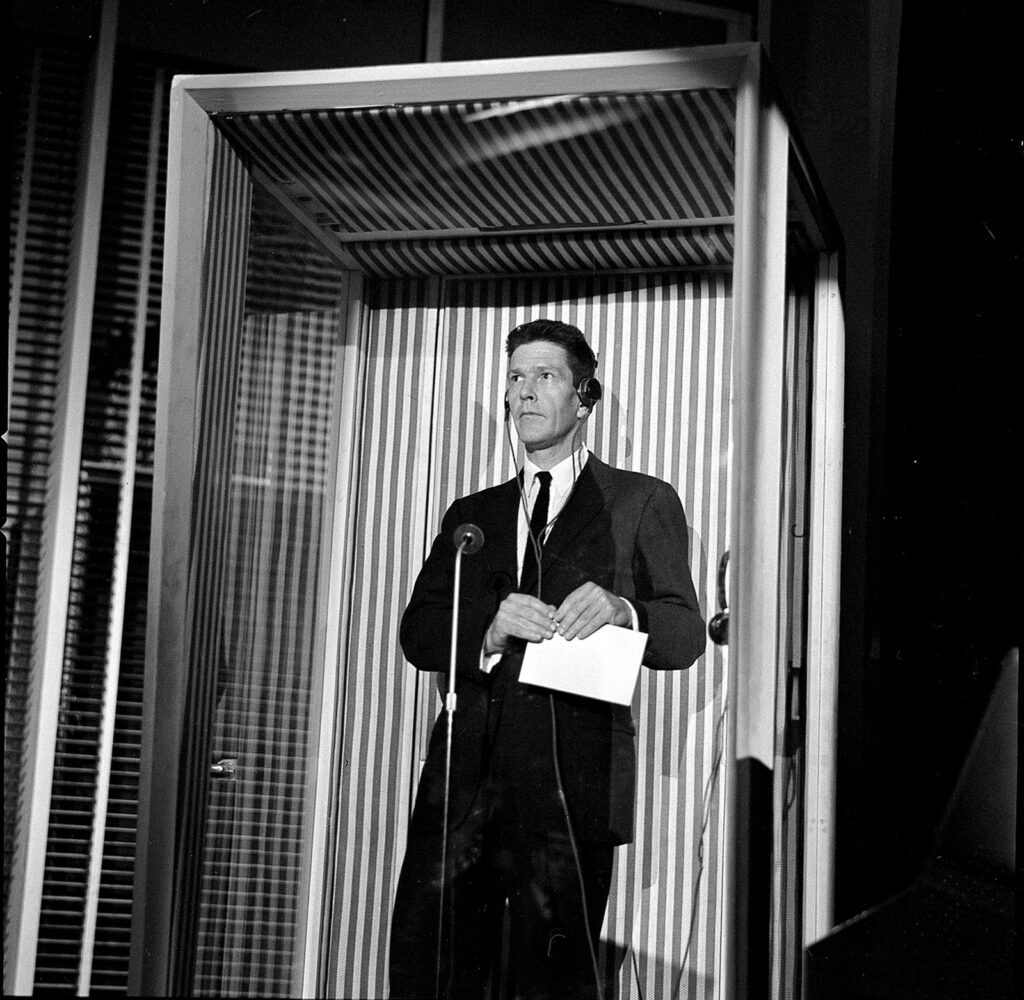
In 1959, after he had given three lectures in the West German city of Darmstadt on the principle of indeterminacy in music and then staged a series of concerts across Western Europe, the avant-garde composer John Cage became a star on Italian television. He appeared on Lascia o Raddoppia?, a popular quiz show hosted by a man called Mike Bongiorno every Thursday night at nine o’clock. The program, based on The $64,000 Question, was a manifestation of the Americanization of Western European culture after World War II. It fused capitalist incentives—lots of cash—with the display of recondite expertise. A contestant answered a question on a favorite subject. The questions got harder every week. A correct answer doubled the contestant’s prize; a wrong answer halved it and ended the game.
Cage, who was then working in a music studio in Milan, applied successfully to compete on the show, answering questions about one of his obsessions: mushrooms. The twist was that he would also perform a short piece, beginning with his composition for prepared piano, Amores, and eventually including a collage of random sounds he’d recorded in Venice. Cage got to the fifth and final week of the game, with more than five million lira at stake. He was placed in a glass-walled isolation booth, and Bongiorno asked him to name every type of white-spored mushroom.
There are twenty-four, and Cage had to list them all before a clock that he could not see ticked away his allotted time. What he could see was the audience frantically gesturing toward him as the clock ran down. He proceeded calmly through his answer, reaching the twenty-fourth white-spored mushroom almost exactly as time ran out. The jackpot, the equivalent of $6,000, was enough to buy a Steinway piano for himself and a Volkswagen bus for the dance company of his close collaborator Merce Cunningham. He also became famous in Italy. The press depicted him as the archetypal American man: tall, square-jawed, “pleasantly reminiscent of Frankenstein.” Federico Fellini considered casting him in La Dolce Vita.
All this might prompt the terrifying question with which Bob Dylan stopped the hearts of critics six years later: “You know something is happening but you don’t know what it is/Do you, Mr. Jones?” It is easy to imagine Cage’s five-week odyssey on Lascia o Raddoppia? as a work of art, a wonderfully outlandish Dadaist happening. The title of the show translates roughly as “double or quits?,” connecting it to the ludic method of composition and choreography developed by Cage and Cunningham, which used the throw of a dice to determine the next note or move. The random collision of elements—avant-garde music and cheesy game show, money and mushrooms, capitalist accumulation and artistic vision—is not so far from Robert Rauschenberg’s contemporaneous development of visual “combines,” composed of wildly disparate materials.
Source: Fintan O’Toole, “Freedom for Sale,” New York Review of Books, July 22, 2021
